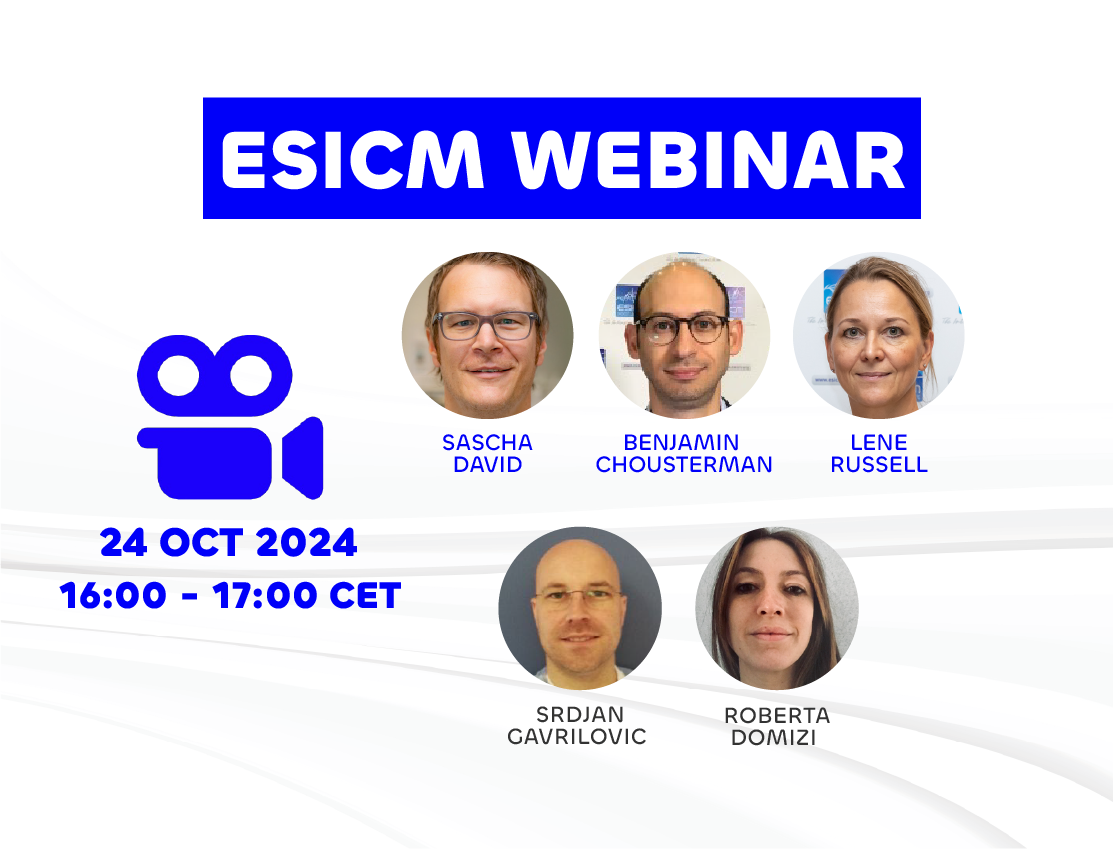Trauma and Emergency Medicine
The Trauma and Emergency Medicine section is led by Kevin Roedl.
TEM News



Resources
Education
Webinars
Latest webinars:
- Management of traumatic war injuries: organisation & triage
- Management of traumatic injuries
- Warfare injuries: chemical-/biological-/nuclear & humanitarian medicine
- Management of traumatic war injuries: blast and burn injuries
- Management of traumatic war injuries: crush injuries & penetrating wounds
- Prehospital assessment of battlefield injuries & haemorrhagic shock management
Sessions from past conferences
Top Sessions from LIVES 2021 selected for you:
- In Plato’s cave: neuromonitoring for clinical decision making Debate 08:40 Multimodality neuromonitoring: more than chasing numbers?
- Temperature control after cardiac arrest
- Why doesn’t my patient wake up? Thematic Session 14:00 Non-convulsive status epilepticus (diagnosis & treatment)
- Emerging therapies: what will we be using in 2030 to treat neurologic dysfunction
- Optimising brain perfusion after resuscitation
- Update in Advanced Life Support. Coronary angioplasty after resuscitation: when?
- Coagulation in trauma.
- Extra-cranial complications of brain injuries
Research
Projects
PneumoINSPIRE
The aim of this project is to perform an international multicentre prospective observational cohort study of nosocomial pneumonia in intensive care units (ICUs) worldwide in order to provide up-to-date and comprehensive descriptive data on the diagnosis, microbiology, time course of resolution, management and outcomes in a global ICU population.
Secondary objective: Evaluate nosocomial pneumonia in specific subgroups of critically ill patients (such as, chronic obstructive pulmonary disease [COPD], the elderly, and trauma patients).
MOnIToR
Monitoring Organ Donors to Improve Transplantation Results. Will protocol guided resuscitation of brain dead organ donors using Pulse Pressure Variation (PPV) increase the number of organs transplanted per donor?
Publications:
- Monitoring Organ Donors to Improve Transplantation Results (MOnIToR) trial methodology
- Protocolized fluid therapy in brain-dead donors: the multicenter randomized MOnIToR trial
RADAR
Role of Active Deresuscitation After Resuscitation (RADAR). Deresuscitation:minimisation of fluid administration, together with diuretics and perhaps ultrafiltration.
This survey aimed to characterise current beliefs and practice with regard to deresuscitation, the use of diuretics and/or renal replacement therapy to remove accumulated fluid in stable critically ill patients.
Preliminary resutls: Characterisation of fluid balance over time: preliminary results from the Role of Active Deresuscitation After Resuscitation (RADAR) study.
Surveys
Etrauss
European Traumatic Shock Survey aimed to describe current critical care practices in the initial management of patients with traumatic haemorrhagic shock in Europe and compare these practices with contemporary guidelines.
Burns
Initial fluid management and use of vasopressors in adult severely burned patients: An European survey
This international survey focuses on the current practices in fluid management and the use of vasopressors for adult severely burned patients.
Relevant Literature
Karim Asehnoune et al. The research agenda for trauma critical care.
Jerry P. Nolan et al. Intensive care medicine research agenda on cardiac arrest.
Post-admission outcomes of participants in the PARAMEDIC trial: A cluster randomised trial of mechanical or manual chest compressions.
European Resuscitation Council and European Society of Intensive Care Medicine 2015 guidelines for post-resuscitation care
The European guideline on management of major bleeding and coagulopathy following trauma: fourth edition
Relevant resources on Ebola
Ebola Virus Disease (EVD), also known as Ebola haemorrhagic fever, is a severe illness with a high mortality rate, particularly in affected patients who are untreated or have delayed treatment. Ebola is transmitted by direct contact with blood, body fluids and tissues of infected animals or people and has an incubation period of 2 – 21 days.
ESICM & Ebola
The European Society of Intensive Care Medicine continues to closely monitor the 2014/15 Ebola outbreak and has prepared several initiatives and resources to help intensive care and emergency workers to prepare for and manage EVD. ESICM collaborated on this survey: Preparedness for admission of patients with suspected Ebola virus disease in European hospitals: a survey, August-September 2014 (12/2014). For more information on PREPARE – Platform foR European Preparedness Against (Re) emerging Epidemics research centring on EVD, visit the website.
VHF – Ebola Registry
There are indications that patients suffering from Ebola in western countries have a lower mortality rate, but since we currently lack information on the evolution of Ebola outside of Africa, we do not know what occurs when Ebola patients become dependent on organ support.
In order to better characterise these severe forms of the virus, the ESICM Trials Group have set up a VHF – Ebola Registry. Our aim is to better understand the most useful treatments and potential futility frontiers within this difficult disease. Centres who have data on patients who have been diagnosed with Ebola and treated in their ICU are welcome to register through the link here. If data collected in this registry is published, all contributors will be listed in the publication.
For further information, please contact: ebola@esicm.org
Videos
EBOLA: a personal experience
icTV Interview with Mitchell Levy
Mitchell Levy sits down with icTV to share his experience, as a clinician – and a father faced with the unimaginable dilemma of dealing with having his son stricken with the ebola virus disease during the 2014 ebola outbreak in Western Africa.
Article Reviews
Therapeutic Hypothermia: Survival After In-Hospital Cardiac Arrest
Which resuscitation strategies have the best impact on patient outcome with in-hospital cardiac arrest?
Delayed awakening after cardiac arrest
Nurses versus physician-led interhospital critical care transport
Rapid response teams implementation to reduce hospital mortality
Chest Compression during CPR: Do ventilation interruptions really affect outcome?